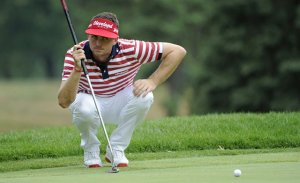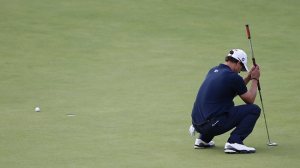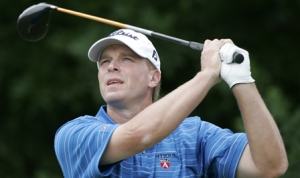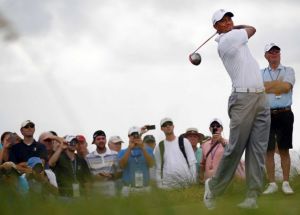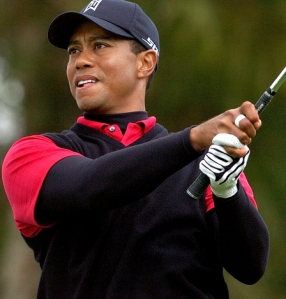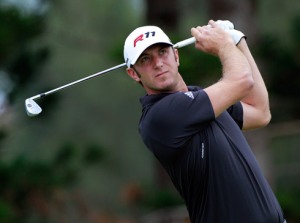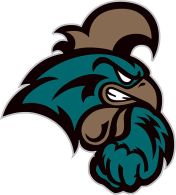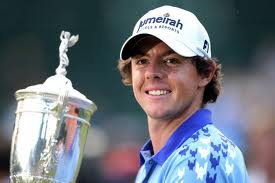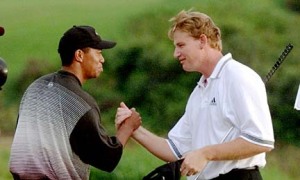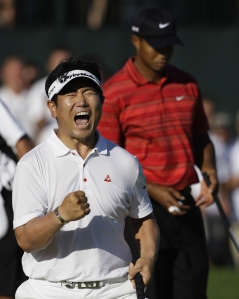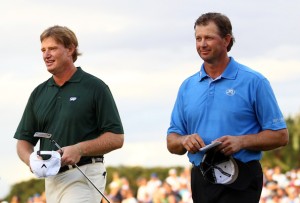I spent my Thanksgiving vacation at one of the most visually stimulating golf courses in the world: Torrey Pines. For the second time in two years, I was fortunate enough to play the track that hosted the famed 2008 U.S. Open. After my first foray, I wrote a review. The following are my impressions of the course, from top to bottom of the cliffs.
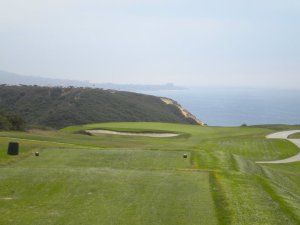
Where Golf Meets the Edge of the Earth: Torrey Pines
A different kind of wallpaper lines the inside of the pro shop at Torrey Pines. Framed photos of championship moments crawl across the back of the store and beyond. Adolescent images of players like Tiger Woods, Phil Mickelson, Ernie Els and Billy Mayfair—who at an age of innocence reigned supreme over the rugged Pacific landscape—can be seen hoisting various gold-plated trophies. This is a place where youth meets old age, and time seems to stand relatively still.
Torrey Pines has played host to the Junior World Golf Championships since the tournament’s inception in 1968. It was also the stage for the 2008 U.S. Open, an unforgettable battle between Woods and Rocco Mediate that ended with Woods claiming his 14th career major title. In 2010, I was welcomed into the fold. Naturally, the course withstood my onslaught of profanity-laced swings and balky putting stroke. However, I came away thoroughly impressed with the layout, condition and overall ambience.
Torrey Pines Resort consists of 36 holes, broken up into a South Course and a North Course. The most aesthetically appeasing holes on the South Course are along the opening stretch. The third and fourth holes offer glimpses into the abyss that is the Pacific Ocean. One miss-club could send your ball careening over the steep edges of the Earth. Challenging par 4’s and a series of daunting into-the-wind 200-plus yard par 3’s can keep the mid-level handicapper from mastering the South. Adventurous paragliding enthusiasts float behind the par-4 twelfth. Spectacular views will play the role of distraction throughout the rest of a back-nine that carves its way through the coastline to the clubhouse.
The setup allows for an abundance of birdies on the par 5’s. A wedge is the weapon of choice with two solidly placed approach shots. The signature par- 5 eighteenth hole allows for you to “Get Your Tiger On” (Oh, stop it). If you’re lucky this par-5 is conquerable in two. If you’re even luckier, the pin is cut in the front right of the green, waiting to be attacked. But be warned, the manmade pond to the green’s front left is prone to gobble up even the bravest of shots.
If you leave Torrey Pines without venturing onto the North Course for an afternoon (or next day) 18, you’re missing out. The underrated North provides plenty—and potentially more—eye candy. As early as the second hole, you should be breaking out your camera. The backdrop is nothing less than breathtaking as you wind up and fire out to a short par-4.
The sixth and seventh holes are the cornerstone of the entire course. A severely downhill par-3, followed by a harrowing tee-shot at the seventh creates high drama. Hopefully you don’t get easily bored with stunning visuals, because this is arguably the most photogenic point on the compound. But be careful on your quest to get the perfect shot of your foursome, because rattlesnakes and other critters can be seen in the native brush.
You may be playing more yards on the back nine, but the fairways are a bit wider, and greens more accessible. If this is the final act of a quartet of nines, you’ll most likely be comfortable with the prickly Bermuda grass by now. The greens can be an initial obstacle, and very frustrating to learn with their subtleties and inconsistencies, but it gets easier. Remember, it all breaks toward the ocean!
Torrey Pines is a public course, so expect a five-hour round. The drastic imagery that cradles both the North and South courses is worth the wait. Most weekday players are tourists looking for that perfect photo-op, so pack your patience. Don’t forget to load a few more golf balls as well, in case you’re one of the thousands who annually dump wayward shots into the local barranca.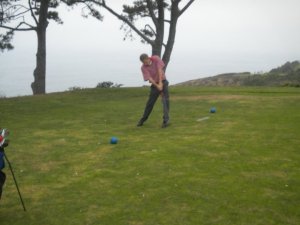
Tips for when the golf stops:
Chances are you won’t be playing much night golf. That’s OK, there’s a lot going on around the neighborhood. Travel only a few miles north and check out the Del Mar Racetrack, where you can place a wager on a local thoroughbred. The legendary club puts on dozens of events per month.
Another local hang out is the quaint and wealthy town of La Jolla. Shops and restaurants make for an interesting place to stroll through. However, it’s anybody’s guess as to when stores are open. Some local shop hours range from 9AM-2PM, giving employees plenty of time to ride the waves.
Take your trip south, and you’ll run into downtown San Diego. If you stumble into the Gaslamp District, there will be no shortage of entertainment. I promise.
–Anthony Stipa
